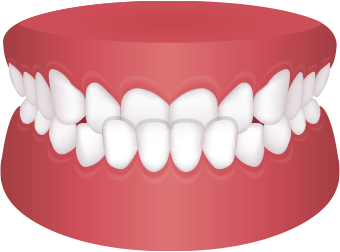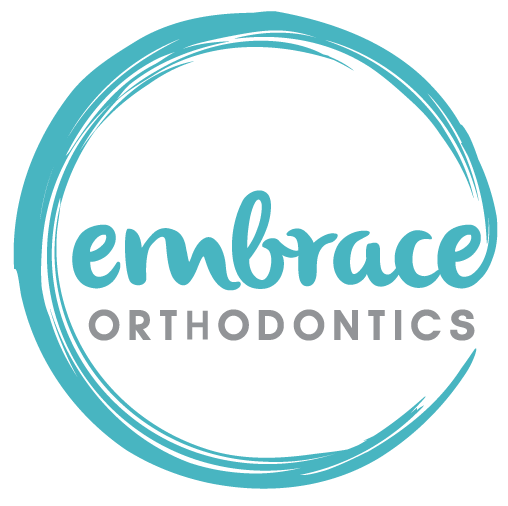What Causes an Underbite?
Underbites can manifest in multiple ways.
- Childhood habits: thumb sucking, bottle feeding or pacifier use past the age of 3 can all contribute to pushing teeth out of alignment
- Genetics: most commonly, underbites are inherited from parents and grandparents, as an individual’s genes determine jaw shape, as well as tooth shape and size
- Injury: damage to the jaw or face can cause permanent shifts in the orientation of the jaws, causing the lower jaw to protrude even after setting broken jaws

Can an Underbite Correct Itself?
It is rare that an underbite will self-correct. Treatment is usually necessary to align teeth correctly and create the best possible conditions for good oral health going forward. This treatment can take multiple forms, however.
Types of Underbite Correction and How to Choose
There are multiple correction methods available for underbites that Embrace Orthodontics can provide.
- Reverse-pull face mask: this solution, designed for fixing underbites in children under the age of 12, looks like braces headgear, and wraps around a child’s head to correct bone placement before the skull fuses. It pulls the upper jaw into the correct position with metal bands that are fastened to the upper back teeth. A chin cup is often used to keep the mask in place. The more often this apparatus is worn, such as at home or while sleeping, the more effective it is. If the child also has a narrow upper jaw, a palatal expander will also be incorporated as part of the face mask, to allow the upper jaw to widen while the upper jaw is being pulled forward. This option tends to be more commonly used in kids, as their bones are still forming.
- Braces: the most common way to align your underbite, braces are favored for being economical and effective, and are especially popular for correcting underbites in teens and young adults. Braces can come in metal, clear, or ‘hidden’ varieties, and the treatment time usually lasts about two years. Retainers are required to maintain the result after active treatment is completed.
- Invisalign: some underbites are fixable with Invisalign aligners. More severe underbites might necessitate a combination of Invisalign and other treatments. In general, underbites caused by tooth positioning are treatable by Invisalign but underbites caused by skeletal issues require greater measures.
- Tooth extraction: in cases where patients have too many lower teeth, contributing to protrusion, an underbite can be corrected by having the extra teeth removed. This may itself be the extent of the procedure, or might be a precursor to other stages of treatment.
- Surgery: In cases where an underbite is caused by the lower jaw protruding too much or the upper jaw set back too much, both of which are beyond what can be fixed orthodontically alone, a surgery might be suggested by healthcare professionals. Depending on the nature underlying the underbite, the surgery may involve moving the upper jaw forward if the underbite is caused by a deficient upper jaw, moving the lower jawbone backward in the case of underbite caused by overgrowth of the lower jaw, or moving both jaws if the underbite is caused by a combination of upper and lower jaw growth or lack of growth. Orthognathic surgery needs to be conducted in conjunction with orthodontic treatment, and the entire treatment includes pre-surgery orthodontics (usually about 1 year), surgery, and post-surgery orthodontics (usually about 6-8 months).
- Cosmetic dentistry: useful for mild overbites, non-surgical cosmetic dentistry can reshape lower teeth and improve upper teeth with veneers. This won’t adjust an underbite but will reduce its visibility and amend its functionality. We do want to caution audience of this option, as it requires irreversibly modifying natural tooth structures.
If you start noticing your child or yourself having an underbite, instead of guessing and trying to figure it out yourself, why not schedule a free consultation to let the professionals give you the best advice? Dr. Li and the team at Embrace Orthodontics are available to talk over potential treatments for you and your loved ones to enable you to better eat, smile, speak, and perform all the activities you love.

